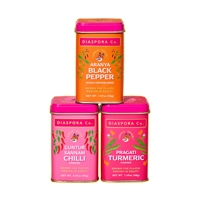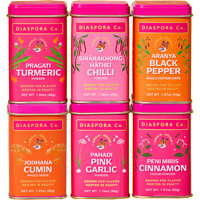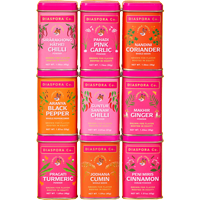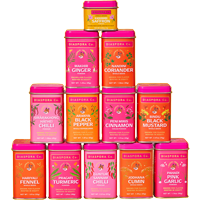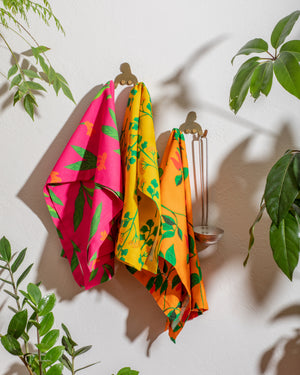When friends and acquaintances visiting my hometown, Lucknow, the capital of the northern Indian state of Uttar Pradesh, ask me where they should try Lucknowi biryani, I only have one place to recommend — Idrees Hotel. Located in old Lucknow, in the Pata Nala locality, it is a nondescript shop with unassuming interiors that make it easy to miss. As you weave your way through the crowd in front of the shop, you will be captivated by the fragrance of the spices added to the biryani. You are likely to be greeted by Abubakr, the third-generation proprietor of the shop. If you’re lucky and show up at non-rush hour, he will let you in on a secret: “Lucknow biryani is actually a pulao — yakhni pulao, to be specific.”
Even though pulaos and biryanis have long been pitted in a pitched flavor battle, it is hard to differentiate one from the other when it comes to technique or ingredients. Both dishes contain long grained-rice and meat or vegetables cooked in a sealed pot on low flame. However, it is only when you shift focus to the spices within each dish that the contrast becomes apparent. The spices used in pulao are simpler and much milder than those that go into a biryani.
In the pakki (cooked) style of biryani, rice and meat are cooked or prepared separately and then assembled. (Whereas a pulao could be called a one-pot dish where the meat is first sautéed in oil with spices and a stock of sorts, which flavors the layers of rice.) In a yakhni pulao, milk or yogurt is added to the simmering liquid or broth —called yakhni in Urdu— which is absorbed by the rice inside the sealed pot.
According to Jafar Mir Abdullah, a descendant of the royal family that once ruled over the princely state of Awadh, of which Lucknow was the capital, Mughal rulers had a principal role in developing the complex flavor profiles of both biryani and pulao — and indeed, in the creation of yakhni pulao itself. Their mastery over the use of spices is showcased in these two dishes. But it became the hallmark of an entire genre of cooking.
![]()
To understand how the Mughal kitchen shaped the use of spice in India regional cuisines, look at the factors that allowed food to be developed as an art in its own right. By 1225, invasions from Central Asian rulers had become common in North India, and all of northern India came under Islamic rule. The Delhi Sultanate ruled over a swathe of the Indian subcontinent from the 13th to 16th centuries. These rulers of Turkic descent were followed by the Mughals in the 16th century. The court, kitchens and administration of the Mughal rulers emulated the traditions, literature, habits and language of Persia.
This cross-cultural interaction was furthered by the tradition of gift-giving in the Mughal empire, which played an important role in cementing social relationships and subtly establishing status, power and wealth. Spices, along with other food items such as fruits and meat, continued to bring exclusivity to royal cuisine.
According to the Baburnama, the memoirs of the first Mughal ruler of India (translated to Persian by a Mughal courtier named Abdul Rahim Khan-i-Kanan), Babur found the country of “few charms” with “no first-rate fruits” or “no good bread or food in the bazaars.” The emperor planted orchards with imported seeds from Central Asia and Persia to grow melons, peaches, apricots, pistachios, walnuts, and other foods. He set up his court in Delhi after defeating Ibrahim Lodi, the last Delhi Sultan. The city remained the seat of power for almost the entire Mughal rule in India. However, it was the Mughals after Babur who consolidated the empire. His grandson, Akbar, is often referred to as the chief architect of the Mughal empire.
While Mughal rulers had distinct ways of exercising social and cultural command, all of them had a sense of zauq (Urdu for taste), and an appreciation and lust for aesthetic and hedonistic pleasures such as food, music, poetry, art, nature and hunting. Thus, connoisseurship became the tone of Mughal imperialism, and architecture, music, art and gastronomy became the grammar of aesthetic appreciation.
![]()
Mughal kitchens were heavily influenced by currents from across the country’s borders. The Mughals brought in dishes of Iranian origin like qorma, qalīya, dopiyāza, pulāʾo (or pilāv), kabāb, ḥalīm and harīsa, but these were enhanced with spices and ingredients available in the subcontinent. There was a fair bit of internal border crossing as well. The Ḵẖulāṣat-i Mākūlāt, a cookbook from Emperor Aurangzeb’s time as well as Shahjahan’s Nusḵẖa-i Shāhjahānī mention a recipe for khichṛī-i Gujarātī or Gujarati khichṛī. The simple staple of rice and dal was made indulgent with ghee and a tempering of fried garlic, onion rings, cinnamon and ginger. Most Indians today associate khichri as the simplest home-cooked meal. But the use of spices made it fit for royalty.
This cross-cultural interaction was furthered by the tradition of gift-giving in the Mughal empire, which played an important role in cementing social relationships and subtly establishing status, power and wealth. Spices, along with other food items such as fruits and meat, continued to bring exclusivity to royal cuisine.
Some of the spices introduced during Mughal rule continue to have a pivotal place in the Indian kitchen. For instance, chilli peppers were introduced to the Mughals by Portuguese traders during Shahjahan’s reign from 1627 to 1666. It is surprising that this highly pungent spice was accepted. According to Persian scholar and food connoisseur Salma Hussain, “Chillies were imbibed because they did not look too unfamiliar to the royal chefs and were similar in [application] to long pepper.”
A few early references to the chilli being used in food can be traced to mid-18th century cookbooks written in Persian. The Risāla Dar Bayān-i Atʿima (Treatise on the Description of Foods) as well as Ḵẖwān-i Niʿmat or Table of Delights, both contain a recipe featuring mirch-i surḵẖ (or red chilli) under chutneys. It is plausible that because the chilli was still considered too hot for use in regular food, its use was restricted to spicy condiments until much later.
![]()
Even though Mughlai food in the modern day is often traced back to its aristocratic roots, it is difficult to link these recipes directly to traditional Mughal kitchens. Instead, modern-day Mughlai food took a slightly more circuitous route.
After the fall of the Mughal empire to the British East India Company in the 18th century, Delhi lost its place as the imperial power. The artists, cooks, musicians and architects patronized by the Mughals then migrated to regional centres such as Lucknow (erstwhile Awadh), Hyderabad in south India, Murshidabad in West Bengal, Kashmir and Lahore (now part of Pakistan), where the Mughal legacy of cuisine and culture became intermixed with and enhanced by local flavors and traditions.
Lucknow’s cuisine developed under the rule of Nawab Wajid Ali Shah became the benchmark for the most sophisticated use of spices and essences. Here, cooks and spice-masters were given large sums of money to develop their prized cuisines. These cooks also set up colonies or “bawarchitolas” and stalls in the local bazaars, which helped bring royal food to lay people’s homes. Abubakr’s Idrees Biryani also comes from the same lineage. His ancestors were cooks in the royal households, from which his father learned his art. In 1968, he started an eponymous biryani restaurant in the Pata Nala area of Old Lucknow, which draws large crowds to this day.
Mughal rulers didn’t just embellish their own cuisine with spices of Indian origin, but also bequeathed a sophisticated new cuisine that continues to remain popular throughout the subcontinent.
The Mughal influence has also translated to everyday practices in Lucknowi kitchens. For instance, it is common to use a small pouch of spices tied in a muslin cloth to infuse spices into dishes. Comparable to a bouquet garni, this is called masale ki potli (or “bag of spices”). It does the job of adding depth of flavor without spices actually being present in the final dish. The combination of spices differs for each dish, as well as across homes. But some of the common spices that can be found in these bags include cloves, black and green cardamoms, peppercorns, cumin, star anise, coriander, fennel, dried rose petals, saffron, bay leaves, dried coconut and fenugreek. Another popular Mughal spice used in Lucknowi food is saffron. Considered a spice of the elite, saffron is infused in milk to impart color to pulaos as well as to garnish and flavor sweet dishes.
![]()
Across the country, at the crossroads of East, West, North and South India, the city of Hyderabad became a melting pot of cultures. Before the spread of Mughal food influences via Lucknow and Delhi, the city already had a rich tradition of consuming bread, rice and meat-based dishes influenced by the Bahmani and Qutab Shahi dynasties of Iranian descent, which ruled until the late 1600s. Here, popular Mughlai cooking techniques and dishes were imbibed and mixed with local flavors.
The main difference between Mughlai food from Lucknow and Delhi, and food developed in Hyderabad, is that the latter includes a souring agent (such as curd or tamarind) to suit the local palate. The heavy use of spices like chillies, poppy seeds and saffron also brings a distinct, robust flavor to Hyderabadi cuisine. Some people even call Hyderabadi cuisine a spicier and tangier cousin of Mughlai food.
Thus, like all art forms and material culture, food in the Mughal empire became a tool for articulating sophistication and power, and while it came out of elite kitchens, the lines between popular and haute cuisine were frequently blurred. Local dishes and flavors were widely embraced by royalty. Mildly spiced Iranian food of Mughal ancestry was refined with the abundant spices available in the subcontinent, which the rulers were already familiar with, owing to a well-established spice trade with the Arab world. In this way, Mughal rulers didn’t just embellish their own cuisine with spices of Indian origin, but also bequeathed a sophisticated new cuisine that continues to remain popular throughout the subcontinent. They are also owed at least some of the credit for the masterful use of spices — the leitmotif of regional Indian cooking.







